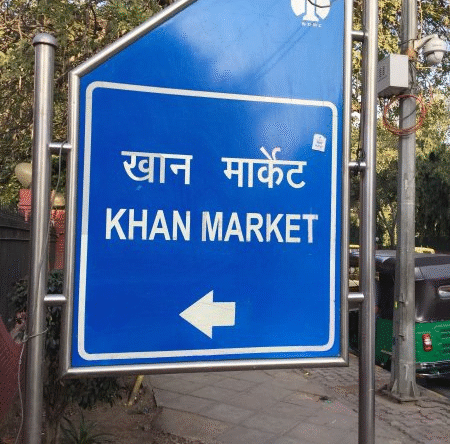Let’s begin with a story, to have a chill understanding.
In a small village in rural India, a master weaver spends six months knotting silk threads into a tapestry of peacocks and lotus flowers. When finished, he sells it to a merchant for ₹50,000. The merchant ships it to Paris, where a luxury maison frames it, brands it as “Le Jardin des Rêves”, and sells it for ₹50 lakh. To an outsider, this seems exploitative—a 10,000% markup for “just a tapestry.” But the buyer isn’t paying for silk threads. They’re paying for the myth of the jardin, the story of the peacock as a symbol of immortality, and the privilege of owning a fragment of a fantasy.
This is the paradox of luxury. The raw product is rarely the point. What you’re buying is alchemy—the transmutation of raw materials, labor, and imagination into cultural totems. Outsourcing doesn’t degrade this alchemy; it’s merely one brushstroke in a larger masterpiece.
The Myth of “Made In”
Luxury brands are often accused of hypocrisy: Italian leather handbags stitched in Romanian ateliers, Swiss watches assembled in Thailand, French perfumes blended in Gujarat. Critics cry, “They’re just slapping logos on cheap labor!” But this misunderstands the anatomy of value.
A Chanel tweed jacket isn’t expensive because it’s sewn in Paris. It’s expensive because:
- The Design Oracle: Teams of artists, historians, and engineers spend years refining a single silhouette. The 1955 Chanel jacket required 20+ prototypes to perfect its weightless drape.
- The Material Obsession: Loro Piana sources vicuña wool from Andean herders who comb the animals by hand to avoid stressing them. The wool costs $3,000/kg before a single thread is spun.
- The Invisible Infrastructure: Louis Vuitton’s R&D lab employs chemists to invent proprietary coatings for leather to resist rain and scratches.
Outsourcing stitching or assembly doesn’t erase this intellectual labor. It’s like saying Shakespeare’s plays lose value because the Globe Theatre hired carpenters from Southwark.
The 5,000% Markup: What Are You Actually Paying For?
Let’s dissect a ₹5 lakh Louis Vuitton trunk:
- Raw Materials: ₹30,000 (canvas, leather, brass).
- Labor: ₹20,000 (crafted in a workshop in Drôme, France, or a licensed factory in Spain).
- The Rest (₹4.5 lakh) buys you:
- Time Travel: A design language unchanged since 1854, evoking steamer trunks carried on the Orient Express.
- Social Alchemy: The right to enter a room and be seen as someone who belongs there.
- The Anti-Commodity: A product immune to Amazon price wars.
The markup isn’t arbitrary. It’s the price of cultural sovereignty.
Outsourcing ≠ Compromise
Luxury brands don’t outsource to cut corners. They outsource to scale without breaking the myth. Consider:
- Hermès: Silk scarves are printed in Lyon, but the silk comes from Brazilian farms where mulberry leaves are hand-inspected for moth eggs.
- Rolex: Components are machined in Switzerland, but the ruby bearings in movements are sourced from a single mine in Mozambique.
- Gucci: While some sneakers are assembled in Italy, the python skin is tanned in Singapore using a 12-step process patented in 1962.
The factory is just a vessel. The protocols—the chemical recipes, stitching angles, and quality thresholds—are guarded like nuclear codes. A Prada coat sewn in Turkey to Milanese specifications is still a Prada coat.
The Auction of Dreams
When someone “exposes” that a ₹3 lakh Dior dress was made in a Mauritius factory, they miss the point. Luxury isn’t a dress. It’s the performance around the dress:
- The atelier director who rejects 90% of lace samples for being “too stiff.”
- The 1947 “New Look” silhouette that rebelled against postwar austerity.
- The VIP client in Dubai who’s flown to Paris twice a year for private fittings.
Outsourcing labor doesn’t dilute this theater. If anything, it allows brands to focus on what matters: curating desire.
The Real Scandal Isn’t Outsourcing—It’s Duplicity
The only sin in luxury is lying about provenance. When brands claim “100% Made in Italy” while using Vietnamese labor, they betray the myth. But transparency doesn’t destroy value—it redefines it.
Brunello Cucinelli openly produces in Solomeo, Italy, but charges ₹2 lakh for sweaters because he pays workers double the minimum wage and funds philosophy libraries. His clients don’t care about margins; they care about participating in his humanist fairy tale.
Conclusion: Luxury Is a Religion, Not a Product
A Van Cleef & Arpels necklace isn’t jewelry. It’s a scripture written in diamonds, whispering tales of Art Deco Paris and Maharajas. The craftsmen in Sèvres or Shenzhen are just acolytes tending the flame.
Exposing factories is like revealing that the Vatican uses Filipino masons. It doesn’t diminish the Sistine Chapel—it reminds us that cathedrals require both visionaries and bricklayers.
The 5,000% markup isn’t a scam. It’s the entrance fee to a story that outlives its tellers.






